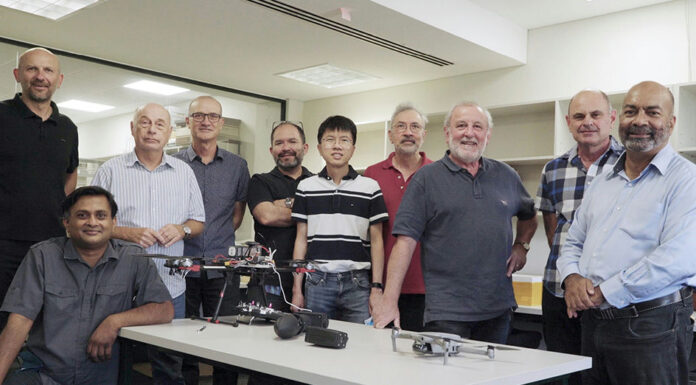UWA’s Breakthrough Sensor Technology Poised to Redefine WA’s Ag-Tech Landscape
In a bold step towards redefining precision agriculture, researchers from The University of Western Australia (UWA) are joining forces with Perth-based startup Magic Wavelength to commercialise a pioneering sensor technology. The innovative microelectromechanical systems (MEMS) spectrometer, developed by UWA’s Microelectronics Research Group (MRG), promises to democratise real‐time crop health monitoring by dramatically reducing both the size and cost traditionally associated with laboratory-grade devices. This collaborative venture not only underscores UWA’s long-standing commitment to scientific excellence but also positions Western Australia at the forefront of agri-tech innovation.
A New Era in Crop Monitoring
Historically, infrared spectroscopy equipment used to assess crop health has been a costly, bulky affair—often exceeding $100,000 and confined to controlled laboratory environments. As explained by Professor Laurie Faraone of the MRG, the new MEMS sensor transforms this paradigm by harnessing semiconductor technology to produce an instrument that is both affordable and portable. Using the infrared spectrum of a leaf, the device can instantly gauge a plant’s vitality, detecting issues such as water stress or nutrient deficiency on the spot.
“This innovation essentially lets the plant tell you how it is doing,” said Professor Faraone. “By using cutting-edge semiconductor expertise in tandem with insights from the UWA Institute of Agriculture, we have created a tool that is both sensitive and practical for everyday farming.” (UWA, 2025, https://www.uwa.edu.au/news/article/2025/march/uwa-technology-set-to-transform-agricultural-monitoring)
The research builds on decades of work at the MRG, one of Australia’s preeminent semiconductor research groups. Its legacy of excellence has now been extended into the agricultural sphere through a partnership with Magic Wavelength—a startup spearheaded by UWA PhD graduate Dr Kevin Fynn. Magic Wavelength’s prototype has already demonstrated performance comparable to that of commercial laboratory spectrometers, yet in a rugged, field-ready format.
Bridging the Gap Between Research and Real-World Application
The significance of this development lies not only in its technological merits but also in its potential to reshape the agricultural landscape both locally and globally. Traditional spectrometers have long been the preserve of specialized research facilities, making them ill-suited to the dynamic and resource-constrained environments of modern farms. By creating a sensor that can be handheld or mounted on drones, UWA and Magic Wavelength are effectively bringing real-time, actionable data directly to the farmer’s fingertips.
This capability is crucial in an era where efficient resource management is not just a matter of profitability but also environmental stewardship. With climate change imposing unprecedented stresses on water supplies and soil fertility across Western Australia’s wheatbelt and beyond, tools that provide instant insights into crop health can assist farmers in more precise application of water and fertilisers. This, in turn, minimises waste and reduces the environmental footprint of farming operations—a vital consideration in sustainable agriculture policy.
Empowering Local Economies and Fostering Innovation
More than a technological breakthrough, this project exemplifies the power of academic-industry partnerships in driving economic growth. By commercialising a sensor developed in-house at UWA, the venture safeguards and nurtures local expertise while counterbalancing international pressures. Dr Fynn has made it clear that, despite attractive offers to establish MEMS semiconductor facilities overseas, his priority remains on seeding critical aspects of semiconductor manufacturing in Western Australia.
In an environment where global supply chains and manufacturing expertise are in constant flux, this decision reflects a broader strategy to retain high-value technological investments within the region. The prospect of scaling up production domestically is buoyed by recent federal funding initiatives. The UWA-Magic Wavelength project has been awarded an Australian Economic Accelerator grant worth $462,700 over the next 12 months, an investment aimed at developing a prototype ready for production (UWA, 2025, https://www.uwa.edu.au/news/article/2025/march/research-grants-ignite-more-sustainable-future). The proceeds from this agreement will also be reinvested into future research and teaching, thereby cultivating a fertile ground for further innovations in MEMS technology.
Perth’s agri-tech community benefits not only from the tangible economic returns of such a project but also from the intangible asset of local expertise. The collaboration speaks to a vision where state-of-the-art research directly informs practical, day-to-day agricultural practices—setting a precedent for future partnerships between academia and industry.
Global Implications and Future Prospects
While the immediate impact of the new sensor technology is poised to be felt on the ground in Western Australia, its potential reach spans the global agricultural landscape. The low cost and ease of deployment make it an attractive tool for large-scale commercial farms as well as for smallholder operations in regions such as Southeast Asia, where access to modern agri-tech has traditionally been limited. The technology promises to level the playing field by offering precision agriculture capabilities to a broader spectrum of farmers, fostering a more equitable global agricultural market.
The global demand for real-time agricultural data has spurred a wave of innovation in sensor technology around the world—from optical fibre-based sensors used in marine monitoring to AI-driven gas sensing systems in urban environments. Although each application is tailored to its own set of challenges, the underlying drive is the same: to generate actionable insights quickly and efficiently. UWA’s MEMS spectrometer follows in this innovative tradition and illustrates how advancements developed in academic research can have profound, real-world applications.
Historical Context and Technological Readiness
Over the past two decades, the field of microelectronics has undergone radical transformation, significantly lowering the barriers to building highly sensitive yet compact sensors. The UWA MRG has been at the forefront of this evolution, accumulating a wealth of knowledge that has now been channelled into the MEMS spectrometer project. The decades-long research journey is crucial in understanding the weight of this breakthrough—it is not a sudden invention but the culmination of sustained, meticulous exploration into semiconductor and infrared technologies.
The historical context of sensor development in Western Australia is replete with examples of translating state-of-the-art research into commercial successes. Prior initiatives in the region have demonstrated that partnerships between universities and local startups can produce technologies that not only serve niche markets but also have the potential to disrupt traditional industries. By reinvesting commercialisation proceeds back into research and teaching, UWA is reinforcing a virtuous cycle that promises to yield further breakthroughs, ensuring that Western Australia continues to be a melting pot of innovation in both semiconductor technology and agriculture.
Looking Ahead
As the project moves from prototype to production, the broader agri-tech community in Western Australia is watching with keen interest. The promise of affordable, portable, and accurate crop health monitoring could signal the beginning of a new era where agricultural practices are informed by real-time, high-resolution data. For farmers, the ability to swiftly identify and address issues in crop health can lead to significant improvements in yield and resource management—and ultimately, boost the resilience of food production in a rapidly changing climate.
In combining academic rigour with entrepreneurial spirit, UWA and Magic Wavelength have charted a course that is as promising economically as it is environmentally. Should this technology reach its full potential, Western Australia may yet emerge as a leading hub for advanced agri-tech solutions, illuminating a path for similar initiatives worldwide.
Sources:
• University of Western Australia. UWA technology set to transform agricultural monitoring. Available: https://www.uwa.edu.au/news/article/2025/march/uwa-technology-set-to-transform-agricultural-monitoring
• University of Western Australia. Research grants Ignite More Sustainable Future. Available: https://www.uwa.edu.au/news/article/2025/march/research-grants-ignite-more-sustainable-future
By bridging the gap between cutting-edge research and practical application, this venture not only propels Western Australia further into the global spotlight for innovation but also reaffirms the region’s commitment to advancing sustainable, smart agriculture for the future.

